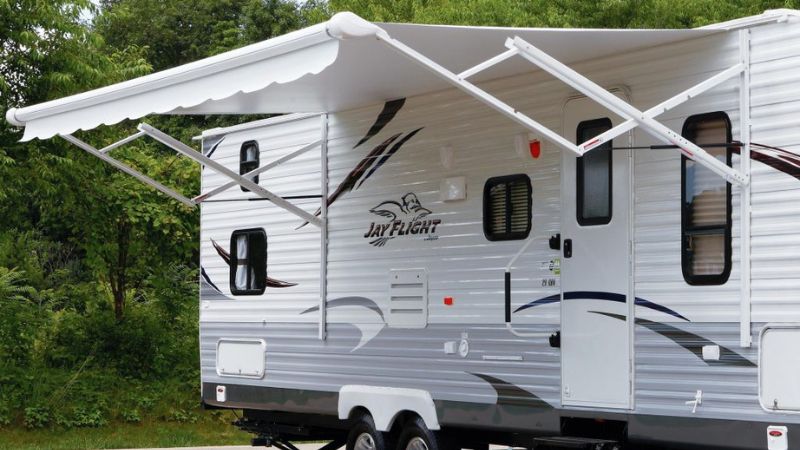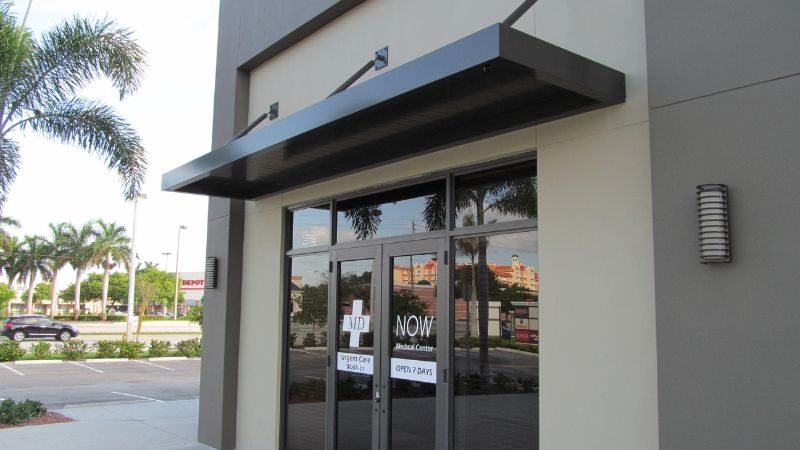Maintaining your RV awning is essential for prolonging its lifespan and ensuring it remains in top condition for your outdoor adventures. Regular upkeep not only prevents costly repairs but also helps maintain its aesthetic appeal. RV awnings are exposed to various weather conditions, making them prone to dirt, mildew, and wear over time.
By following these 7 basic steps of RV awning maintenance, you can keep your awning in pristine condition and extend its usability. From simple cleaning to proper storage, these practical tips will help you avoid common problems like tears, mold growth, and mechanical issues. Whether you’re a seasoned RV traveler or new to the lifestyle, proper awning care will ensure your outdoor space remains shaded, comfortable, and functional.
7 Basic Steps of RV Awning Maintenance
1. Clean Your RV Awning Regularly
Cleaning your RV awning is one of the most crucial steps to maintaining its longevity. Awnings are constantly exposed to dust, dirt, bird droppings, and debris from trees, which can accumulate and lead to mold or mildew if left unchecked. Start by thoroughly rinsing your awning with clean water to remove loose dirt.
Next, use a soft brush or sponge with a mild soap or RV-specific awning cleaner. Make sure to avoid harsh chemicals like bleach, which can damage the fabric. Gently scrub the surface to loosen grime, then rinse it again with water. Finally, allow the awning to air-dry completely before rolling it back up. Cleaning your awning at least every 2-3 months will keep it in good condition and prevent the buildup of harmful substances that could weaken the fabric or promote mold growth.
Also Read:- How To Clean Your Awning At Home
2. Inspect for Damage and Wear
Regularly inspecting your RV awning for signs of wear and damage can help you spot potential problems before they become major issues. Over time, your awning may develop tears, holes, or fraying edges due to exposure to the elements. Inspect the fabric closely for any damage, especially after long trips or rough weather. In addition, check the awning’s arms, hinges, and mechanical components for signs of rust or wear.
Pay close attention to areas where the fabric connects to the metal frame, as these can be stress points. If you notice any small tears, patch them immediately using RV awning repair tape to prevent them from getting worse. By addressing minor damage early, you can avoid more expensive repairs or replacements in the future.
3. Lubricate Moving Parts
Lubricating the moving parts of your RV awning is essential to keeping it functioning smoothly. Over time, dirt, dust, and moisture can cause the awning’s mechanical components to become stiff or corroded, making it difficult to extend and retract the awning. Apply a silicone-based lubricant to the awning’s arms, hinges, and joints to keep them operating smoothly.
Avoid using grease or oil-based lubricants, as these can attract dirt and debris. Be sure to also check the awning’s springs and mechanisms to ensure they are in good working order. Lubricating your awning’s moving parts every few months will prevent rust and ensure that the components function correctly, prolonging the lifespan of the awning.
4. Secure Your Awning During Windy Conditions
Wind is one of the biggest threats to an RV awning. Strong gusts can cause the fabric to flap violently, potentially leading to tears, or even pulling the awning from its brackets. To avoid wind damage, always secure your awning using tie-downs or awning stabilizers if you expect windy conditions. These tools help keep the awning stable and reduce the strain on the fabric and hardware.
If the wind becomes too strong, it’s best to retract the awning entirely to avoid serious damage. Never leave your awning extended in stormy or unpredictable weather, as this increases the risk of costly repairs. By taking the necessary precautions, you can protect your awning from wind-related damage and enjoy worry-free outdoor relaxation.
5. Store Your Awning Properly
Proper storage of your RV awning is essential for extending its life, especially during long-term storage or off-season periods. Before retracting the awning, ensure it is completely clean and dry to prevent mold, mildew, or fabric degradation. Roll up the awning tightly to avoid creases and ensure it’s securely latched to prevent it from unrolling during travel.
If your RV will be stored for several months, consider using an awning cover to protect it from dust, dirt, and UV rays, which can weaken the material over time. Proper storage prevents unnecessary wear and tear, and ensures that your awning remains in good condition for your next adventure.
6. Protect Your Awning from UV Damage
UV rays from the sun can significantly degrade your awning over time, causing the fabric to become brittle, faded, and prone to tearing. To protect your awning from UV damage, consider applying a UV-protectant spray designed for outdoor fabrics. This spray adds a protective layer that shields the fabric from the sun’s harmful rays.
In addition to using UV protectant, try to limit the amount of time your awning is exposed to direct sunlight by retracting it when not in use. When camping in sunny locations, park your RV in shaded areas when possible. Taking these steps will help preserve the color, strength, and integrity of your awning fabric, prolonging its life.
Also Read:- Tips On Retractable Awning Maintenance
7. Schedule Regular Professional Inspections
While basic maintenance tasks can be handled on your own, it’s a good idea to have your RV awning professionally inspected at least once a year. A professional can assess the overall condition of your awning, ensuring that any small issues, such as loose bolts or signs of frame corrosion, are addressed early.
They can also check the alignment and tension of the awning to make sure it’s retracting and extending correctly. Regular professional inspections help prevent long-term damage and ensure that your awning remains in optimal working condition. By scheduling an annual check-up, you can catch potential problems early and avoid costly repairs in the future.
Conclusion
Proper RV awning maintenance is key to maximizing its lifespan and performance. By consistently following these 7 basic steps—cleaning, inspecting, lubricating, and storing your awning correctly—you can prevent damage and enjoy the full benefits of your shaded outdoor space.
Regular attention to your awning not only saves you money on repairs but also enhances your overall RV experience. Make awning care part of your routine and enjoy a well-maintained RV setup on every trip.
FAQs
How often should I clean my RV awning?
It’s best to clean your RV awning every 2-3 months or after any extended trip to remove dirt and prevent mildew buildup.
Can I leave my RV awning out in the rain?
No, it’s recommended to retract your awning during heavy rain or storms to avoid water damage and prevent mold growth.



